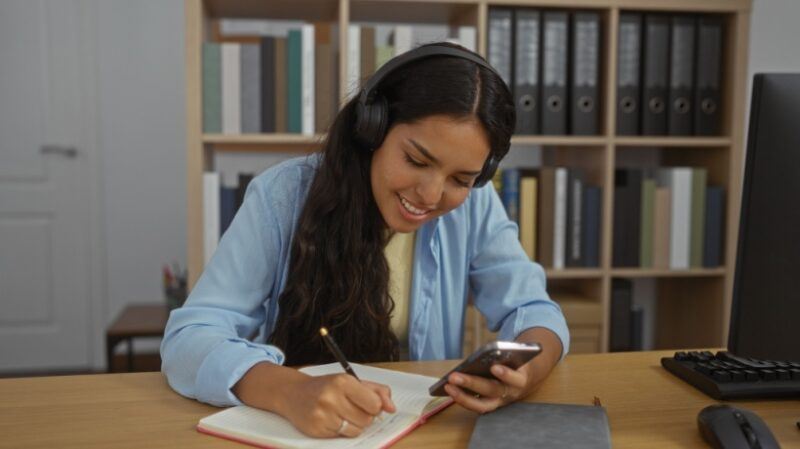
How Social Media Has Turned Into Learning Platforms
Social media isn’t just for posting or scrolling endlessly anymore. Today, social media have evolved into learning platforms as well, although not in the traditional sense. In the past, no one would have imagined that these websites and apps would be used for enhancing knowledge or gaining skills on the go. Social media like Instagram, TikTok, LinkedIn, and even Facebook have another side that turns them into classrooms, coaches, and creativity hubs. This is all because the way we consume content has changed, thus changing how we learn, too. But how is this possible? What makes social media into learning platforms?
The Reason Behind The Rise Of Educational Content In Social Media
Let’s start with Instagram. Nowadays, it’s filled with creators who share knowledge with their followers. These include posts with tips on finance, coding, fitness, or even history and politics. Instagram stories are also used for educational purposes, with quizzes, polls, and infographics. Then there’s TikTok. Sure, it’s mostly about funny videos and dance challenges, but it’s also full of educators. From language teachers explaining grammar to science pros explaining quantum physics, TikTok makes learning fun. With the algorithm offering content you didn’t even know you needed, users discover something new daily. As far as LinkedIn is concerned, it offers long posts, quick industry updates, and free certifications. Whether you learn something from a CEO’s post about leadership or how to ace interviews, LinkedIn has become a hub for professional growth.
Why is educational content so popular on these platforms? It’s because people are tired of traditional learning methods. Long lectures and texts are outdated. Social media, on the other hand, meets us where we are: on our phones. It’s flexible, user-friendly, quick, and personalized—exactly what modern learners seek. Now let’s explore why it’s a good idea to use social media as a learning platform and how you can do it.
7 Tips On How To Use Social Media As Learning Platforms
1. Embrace Microlearning
Our attention spans are getting shorter, and this is backed by science. This is why microlearning has gained popularity, as it’s perfect for busy people and those with short attention spans. A short video, for example, can offer you valuable knowledge while you’re waiting for the bus or during your lunch break. And who makes short videos better than social media? The content social media offers is easily digestible, which means you’re not overloading your brain and thus retain information better.
2. Join Communities
Niche communities on social media, ones that deal with very specific content, have a place for everyone. There, people are passionate about the same things as you, share their insights, and solve problems together. So, while you’re out there scrolling, why not find a community to join and get daily updates about things you’re interested in? LinkedIn is the perfect place for that since its groups aim for professional development. From marketing hacks to career advice, these spaces are all about helping you gain skills or build a network. Even Reddit can be helpful, as it hosts communities for everything from exploring quantum physics to learning coding.
3. Follow Influencers And Educators
Influencers and educators are all over social media, sharing everything from language lessons to coding hacks, even financial or fitness advice. This makes it so easy for you to always find the content you’re looking for because you know who’s creating it. For example, the next time you scroll through TikTok and come across a video of a Spanish teacher sharing pronunciation tips, follow them and improve your language skills. But be aware: just because someone’s account is aesthetically pleasing or they have millions of followers doesn’t mean they are experts. Do a quick credibility check before you follow them or trust their advice. Look for qualifications, reviews, or evidence of their expertise. This way, you’re ensuring you have access to quality content.
4. Use Interactive Features
Social media offers plenty of interactive features that you can leverage for educational purposes, such as polls, Q&A, and quizzes. Educators and creators use polls to test their followers’ knowledge or start discussions. The same goes for Q&A features, which allow you to ask experts anything content-related and get answers in real time. Now, quizzes are a quick way to use your brain and see if you really know your facts on the go. The best part of these features is instant feedback. As you engage, learn, and adapt in real time, the whole experience feels more personal and exciting.
5. Form A Personalized Learning Feed
Social media platforms’ algorithms have gotten faster and smarter. This means that your feed on Instagram, TikTok, LinkedIn, Facebook, and any other platform of your choice shows you exactly the content you’re interested in. Even better, it predicts the content you’ll want to see in the future, too. This means that it’s easy for you to curate it as you like and, in our case, make it educational. The easiest way to do it is by following the right accounts. Next, “train” your algorithm. Watch a few videos on something useful, interact with likes, shares, and comments, and you’re good to go. Finally, don’t forget to review your feed regularly. If an account doesn’t interest you anymore, unfollow it.
6. Networking
With social media, it’s easier than ever to build connections, find mentors, and come together with other people to collaborate. The first platform that comes to mind is LinkedIn, which is an expert in professional networking. You can join groups in your industry, follow thought leaders, and gain insights through comments and posts. Then there’s X (former Twitter). It has a whole community of researchers, students, and experts sharing ideas and articles. Don’t forget about Instagram, either. Many professionals use Stories and Lives to share tips and host Q&A sessions, which can be used to interact and make connections.
7. Be Aware Of The Challenges
Although social media is perfect for microlearning and learning on the go, it’s also full of misinformation and irrelevant content. To protect yourself from wasting time or getting your facts wrong, know that not everything on your feed deserves your trust. For this reason, always cross-check information with reputable sources. Also, set goals on what you actually want to learn and follow creators or accounts that align with those goals. And don’t be afraid to unfollow what doesn’t suit you. Finally, there are distractions to battle. To avoid “doomscrolling,” set time limits or use some productivity apps.
Conclusion
Why wait? Social media is already a part of your daily life, so why not use it to learn something new? Go ahead and follow experts, join conversations, or save some TikTok tutorials. Whether it’s mastering a new language, understanding complex topics, or staying updated on industry trends, your social media platforms’ feeds can turn into your own personalized classroom. All evidence shows that social media will revolutionize education even further. The key is to stay open to new possibilities and make the most of the tools you already have.

